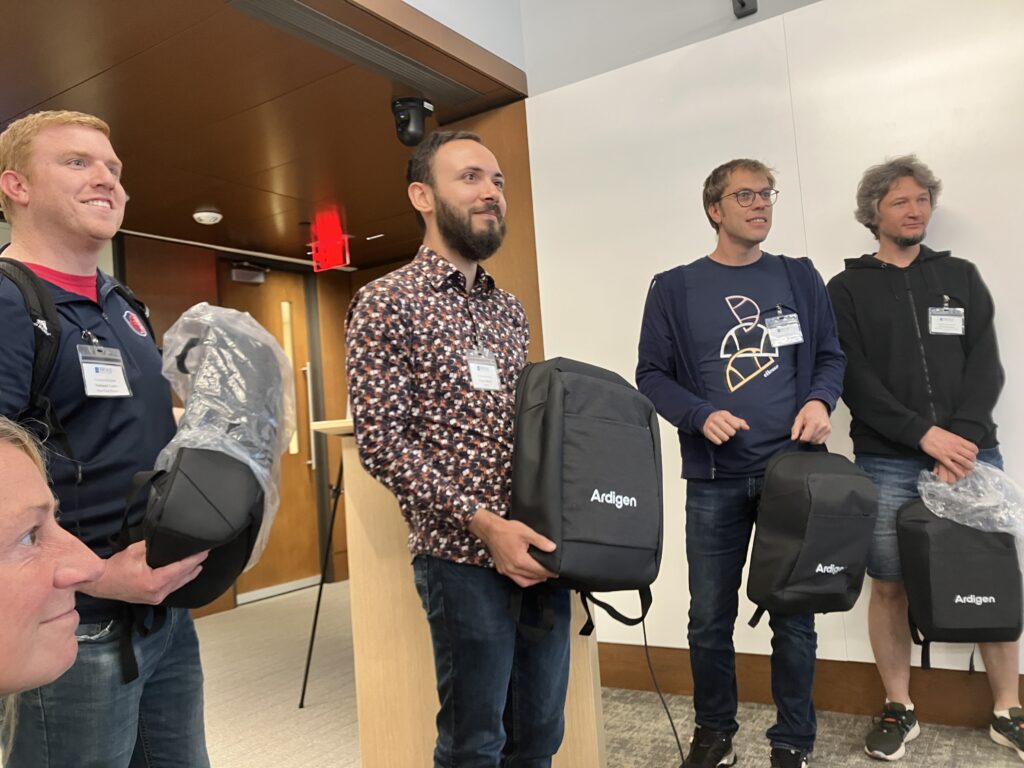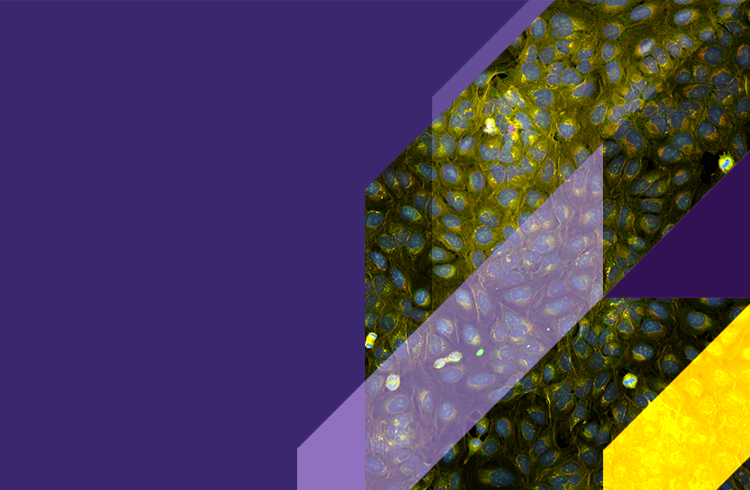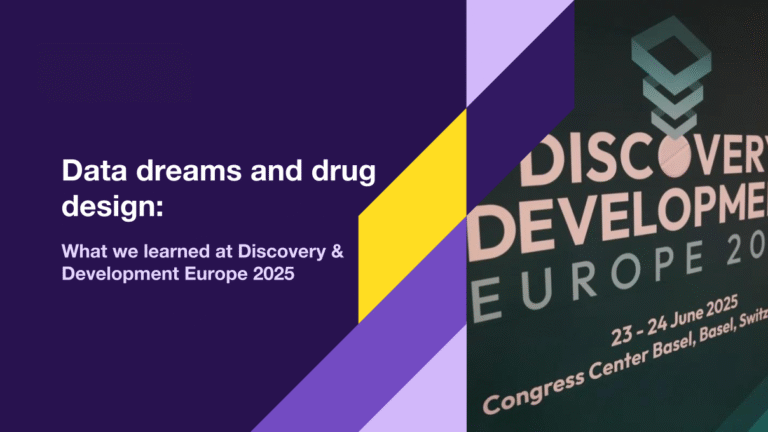Last week, a delegation from Ardigen attended the Society of Biomolecular Imaging & Informatics 2024 (SBI2) conference in Boston, USA. The SBI2’s 11th Annual Conference, dedicated to sharing the latest developments in the field of high-content imaging and screening, took place on September 17-20, Ardigen’s team was represented by Michal Warchol, Nasim Jamali, Livia Legg, Magdalena Otrocka, and Kathy Laska. During the conference, we presented our poster showcasing our latest research in applying AI to predict cell proliferation – you can access it: here

Hundreds of researchers and science leaders gathered at the SBI2 conference to share their insights and innovations. Daphne Koller from Insitro was one of the keynote speakers, delivering a talk on the digital innovation and transformation of AI within the drug discovery process. The second keynote talk was delivered by Hongkui Zeng of the Allen Institute for Brain Science, who shared the progress in uncovering the complexities of cellular organization and function of the mammalian brain.
The conference coincided with the CytoData Society hackathon, a joint event that was proudly sponsored by Ardigen, along with CytoData, the Broad Institute, and SBI2. This year’s hackathon focused on the analysis of JUMP Cell Painting (JUMP-CP) data and was attended by nearly 50 people. The participants, which included both biologists and computational scientists, explored innovative approaches to analyze large-scale single-cell data under the guidance of 20 mentors from the Broad Institute. The hackathon topics covered important questions such as how to preselect compounds for further analysis, match chemical and genetic perturbations, and how to add other modalities to JUMP-CP data.




Highlights of the conference: Day 1
The highlight of the first day’s Colloquium, co-hosted with the CytoData Society, was a talk by Auguste Genovesio, a Computational Imaging & Bioinformatics research group leader at École Normale Supérieure. Genovesio discussed how to account for cell heterogeneity in image analysis, as well as explained the capabilities of Phenexplain, a web-interface image analysis tool that relies on conditional generative models to compensate for cell-to-cell variability [1].
The first day concluded with a round table discussion of approaches to solving the common challenges associated with morphological profiling and image data analysis, including establishing reliable benchmarking methods, discerning technical issues from biological effects, and translating pixel data into scientific insights, as well as creating foundation models that are open-source and accessible.
Highlights of the conference: Day 2
Day 2 of the conference featured a keynote address by Daphne Koller, CEO and founder of insitro. She talked about the use of machine learning for analysis of different data modalities, including morphological profiling data, omics data, histopathology, as well as clinical data, with applications for treating metabolic diseases, neuroscience, oncology and developing new medicines. Koller highlighted the importance of integrating data from the different AI platforms for rapidly advancing therapeutic programs and unlocking novel biological insights, as well as building a culture of collaboration.
Highlights of the conference: Day 3
The second keynote talk was delivered by Hongkui Zeng, Executive Vice President Director of the Allen Institute for Brain Science on the final day of the conference. Zeng’s presentation focused on cell type diversity and organization in the mammalian brain. She discussed the first-of-its-kind project to map out the complete mouse brain, which relied on a multi-level transcriptomic-based approach to decode the connectivity and function of the different cell types. This ambitious project led to the identification of cell clusters and patterns of co-expression in different receptor types, allowing researchers to extrapolate brain functions from cell types.
Key takeaways
Throughout the conference, the main theme was the importance of integrating advanced computational approaches to gain maximum insights into morphological profiling and omics data analysis, including special (single-cell and live-cell) transcriptomics. While these new tools promise to revolutionize phenotypic screening and expand its capabilities, reaching that vision requires solving hard technological challenges. Some of these challenges are:
- Insight 1: The importance of benchmarking and developing better foundation models for improving our understanding of the underlying principles of biology. Jean-Philippe Vert’s talk provided a great overview of the progress in this area.
- Insight 2: Overcoming the challenges of merging different data modalities in order to generate biological insights and accelerate drug discovery processes.
- Insight 3: Creating a culture of collaboration, where scientists from different backgrounds effectively work together, as well as improving accessibility by making AI tools accessible and open-source. As Daphne Koller highlighted, collaboration is the foundation of success for achieving breakthroughs in the field.
Ardigen is dedicated to solving these challenges and advancing the capabilities of biomolecular imaging. We are excited to be at the forefront of developing new methods for high-content screening analysis and to contribute to the engaging conversation along with other exceptional researchers in the field.




